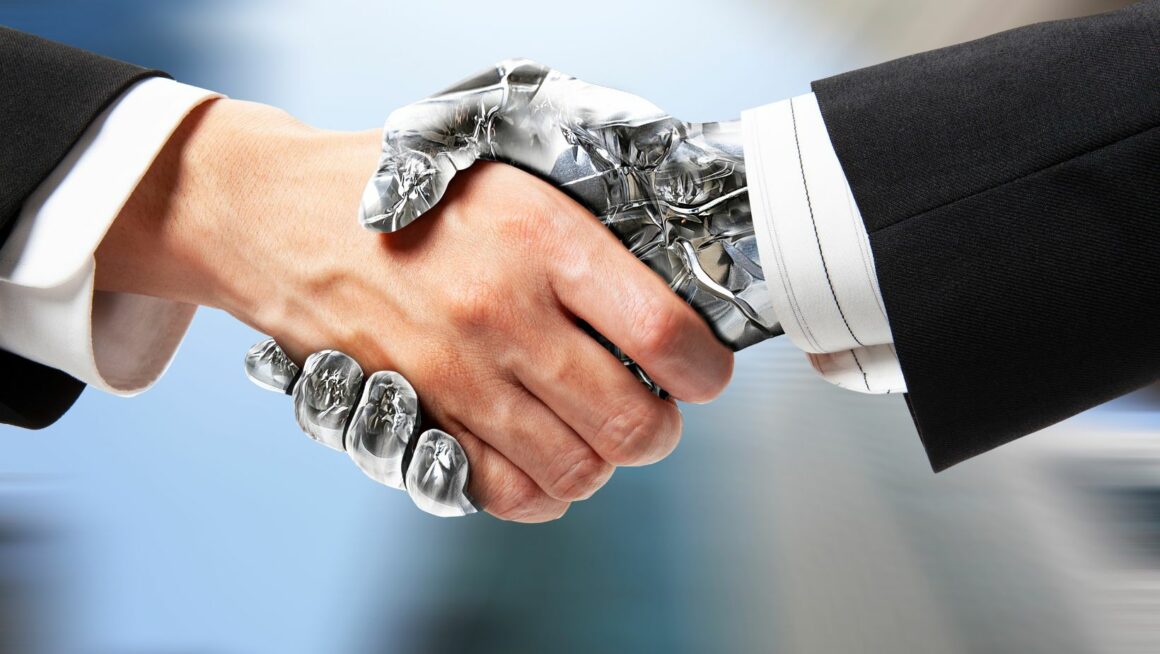In the manufacturing world, the integration of robots alongside human workers is transforming how factories operate. Collaboration between humans and robots can ultimately elevate efficiency, precision, and overall productivity.
This collaboration isn’t just a futuristic concept; it’s happening now, driven by advancements in technology, including artificial intelligence (AI) and robotics.
Implementing robots in your factory is no longer an option limited to large corporations with deep pockets. Thanks to rapid advancements in AI, automation, and robotics, even small to medium-sized manufacturers can benefit from this transformative technology.
The key lies in understanding how to integrate these robotic systems effectively and ensure they work harmoniously with your human workforce.
The Benefits of Implementing Robots in Your Factory
The potential benefits are significant when you think about implementing robots in your factory. Robots can take on repetitive, dangerous, or physically demanding tasks, allowing your human workers to focus on more complex, creative, and higher-value activities.
This shift improves productivity and enhances workplace safety, as robots can handle tasks that might pose risks to human health.
Moreover, robots are incredibly efficient and precise, which is particularly valuable in industries where accuracy is critical. For example, in electronics manufacturing, even a minor product assembly error can lead to costly defects.
With their ability to perform tasks with consistent precision, robots help minimize such errors, leading to higher-quality products and reduced waste.
However, the success of implementing robots in your factory hinges on how well these machines integrate with your existing processes and workforce.
It’s essential to approach this integration with a clear strategy that considers the strengths of both human and robotic capabilities.
How AI-Made Apps Are Boosting Human-Robot Collaboration
One of the most exciting developments in human-robot collaboration is the use of AI-made apps. These applications are designed to enhance communication between robots and human workers, making the interaction more intuitive and effective.
By leveraging AI, these apps can analyze vast amounts of data in real time, helping robots make decisions, learn from their environment, and adapt to changing conditions.
For instance, AI-made apps can be used to monitor and optimize production lines. These apps can analyze data from sensors embedded in robots and other machinery, identifying inefficiencies or potential issues before they become significant problems.
This predictive capability improves efficiency and extends your equipment’s lifespan by ensuring timely maintenance.
Furthermore, AI-made apps can facilitate better collaboration between human workers and robots. For example, in a scenario where robots and humans are working together to assemble a product, AI-powered apps can help coordinate their actions, ensuring that each task is completed in the optimal sequence.
This level of coordination reduces the chances of errors and improves overall production speed.
Preparing Your Workforce for the Shift
As you move toward greater integration of robots in your manufacturing processes, preparing your workforce for this shift is crucial. While robots offer numerous advantages, they also require a workforce that is comfortable working alongside advanced technology.
This preparation involves training and upskilling your employees so they can effectively operate and interact with robotic systems.
Training programs should focus on familiarizing workers with robots’ capabilities and limitations and on how to use AI-made apps that facilitate human-robot collaboration. Providing your workforce with the necessary skills and knowledge ensures a smoother transition and maximizes the benefits of robotic integration.
Additionally, fostering a culture of innovation and continuous learning within your organization is essential. Encourage your employees to embrace the changes and view robots as tools that enhance their work rather than as threats to their jobs.
This positive mindset will be critical in achieving a successful and harmonious human-robot collaboration.
The Future of Manufacturing
The collaboration between humans and robots is reshaping the manufacturing industry, offering significant benefits in terms of efficiency, precision, and safety. By carefully implementing robots in your factory and leveraging AI-made apps, you can ameliorate productivity and create a more dynamic, adaptable production environment.



